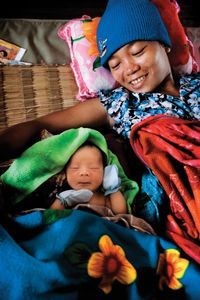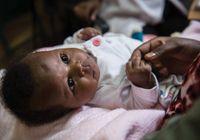
Photo credits: Save the Children/Karin Beate Nosterud
The Field Guide provides essential guidance and tools useful in designing, managing, monitoring and evaluating newborn health services within humanitarian settings. As such, the NBFGabbreviation is intended for program managers, health care providers, emergency responders, cluster coordinators as well as policy makers. It is therefore intended for practitioners from both development and humanitarian agencies working in emergency preparedness and response including host governments, local and international non-governmental organizations (NGOs), United Nations agencies, donor organizations or private voluntary organizations. For instance, global health advocate and policy staff at global, regional and national levels might find the information presented in Chapter 2 useful as they advocate for the prioritization, integration and scaling up of existing newborn care interventions in crisis situations. Health workers and program manager may wish to focus on Chapter 3 which outlines the maternal and newborn health intervention to include in each level of care for better newborn health outcomes, including for pre-term and small and/or sick newborns. Similarly, programmers, emergency responders and cluster coordinators may refer to the guidance and implementation considerations outlined in Chapter 4 and Chapter 5 to ensure newborn health programming is integrated into existing humanitarian preparedness and response plans.
The Field Guide is not a clinical guide; rather, the guidance and tools presented here are designed to assist stakeholders in initiating and implementing newborn health services, as well as to support the expansion of newborn health care within existing humanitarian health services. The Field Guide includes abbreviated clinical and technical aspects of newborn health services as well as program planning, and implementation aspects that responders working at all levels and at different points along the humanitarian-development spectrum might find useful. This includes but is not limited to before a crisis, as a component of emergency preparedness; during a crisis, as acute health care needs arise; and/or following a crisis, when health services are being re-established.

